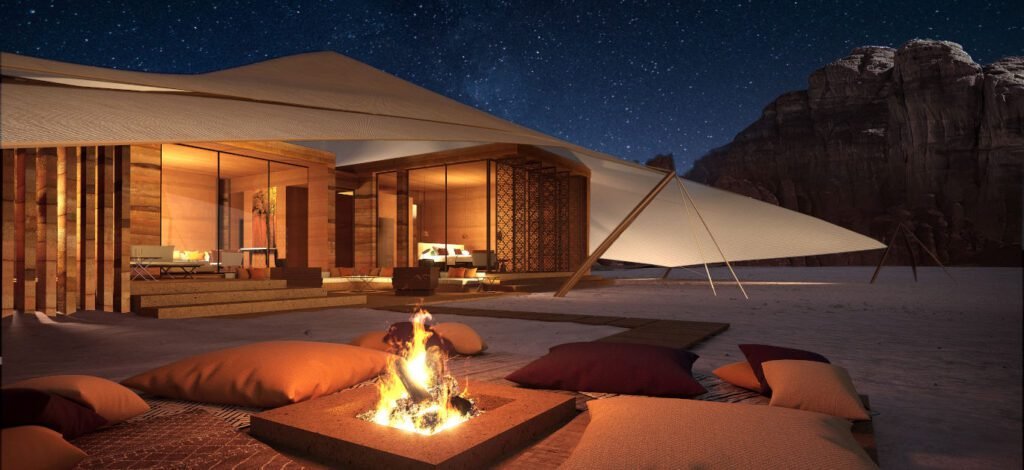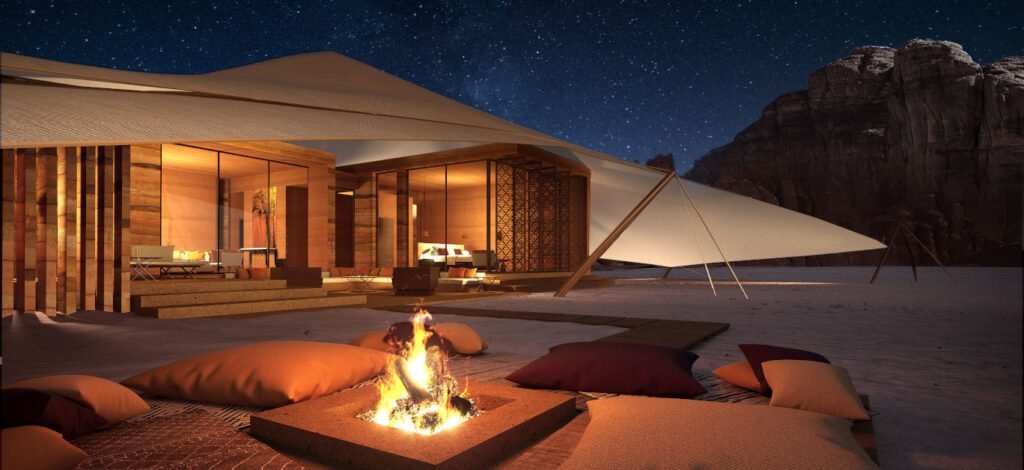Saudi Arabia Luxury Hotel Sector Powers Ahead as Tourism Soars
Saudi Arabia is making a bold move to become one of the world’s top luxury travel destinations. As the kingdom welcomes nearly 150 million tourists annually—both local and international—it’s investing billions of dollars into its growing luxury hotel sector. From futuristic desert resorts to opulent Red Sea eco-hotels, the country’s hospitality ambitions are reshaping the Middle East’s travel scene.
Vision 2030: Tourism at the Heart of National Growth
The transformation is part of Crown Prince Mohammed bin Salman’s Vision 2030 plan—a strategy to reduce the kingdom’s reliance on oil and build a more diverse economy. Tourism is central to that plan. The goal? To attract 150 million tourists a year by 2030 and generate 10% of Saudi Arabia’s GDP from tourism.
Already, 2024 saw record-breaking visitor numbers, with religious tourism to Mecca and Medina contributing significantly. However, the real change is in leisure tourism. Saudi Arabia is rapidly building a new image—less about oil, more about luxury experiences, ancient history, and modern marvels.

Billion-Dollar Hotel Projects Are Taking Shape
To support this massive growth, Saudi Arabia is pouring money into hotel infrastructure—particularly in the high-end segment. Major developments include:
- NEOM: A $500 billion smart city project that includes luxury resorts like Sindalah Island, designed to rival the Maldives. NEOM’s hospitality division recently signed deals with brands like Marriott, Four Seasons, and Aman Resorts.
- The Red Sea Project: Stretching across 28,000 square kilometers of pristine coastline, this eco-tourism initiative includes 50+ luxury resorts. It aims to blend sustainability with luxury, using 100% renewable energy and strict conservation rules.
- Diriyah Gate: This historic area near Riyadh is being developed into a cultural tourism hub, with high-end hotels by brands like Six Senses and Capella Hotels & Resorts.
- AMAALA: Touted as the “Riviera of the Middle East,” AMAALA focuses on wellness, art, and ultra-luxury travel, with partnerships including Clinique La Prairie and Rosewood.
Global Hotel Brands Are Rushing In
The Saudi Arabia luxury hotel sector has become a magnet for international hospitality giants. Marriott, Hilton, Accor, and InterContinental Hotels Group are aggressively expanding their footprint in the kingdom.
Hilton plans to open over 75 new hotels across Saudi Arabia in the next few years. Marriott is working on more than 30 projects. Accor has committed to 60+ properties by 2030, many in luxury categories.
These partnerships aren’t just about rooms—they include spas, gourmet restaurants, and curated experiences that cater to high-net-worth individuals and luxury travelers from around the world.
What’s Fueling the Boom in Tourist Numbers?
There are several reasons why Saudi Arabia’s tourism industry is booming:
- Relaxed Visa Rules: The introduction of an e-visa system in 2019 made it easier for travelers from 60+ countries to visit.
- Events and Entertainment: Massive investment in concerts, sporting events (like Formula E and LIV Golf), and festivals such as Riyadh Season have attracted younger and more global audiences.
- Cultural Heritage: Sites like AlUla, a 200,000-year-old archaeological wonder, have been opened to the public and are being promoted as world-class attractions.
- Improved Connectivity: Saudi Airlines and new regional carriers like Riyadh Air are increasing international routes and building travel hubs.
Luxury Travelers Want More Than Just a Hotel

Today’s luxury tourists are looking for unique, curated experiences. Saudi Arabia is positioning itself to deliver on that demand. From sleeping under the stars in a luxury desert camp in AlUla to diving in the untouched coral reefs of the Red Sea, the offerings are tailored to travelers who want authenticity combined with comfort.
For example:
- Habitas AlUla blends Bedouin-style architecture with five-star service and yoga retreats.
- The St. Regis Red Sea Resort, built on a natural island, focuses on exclusivity and eco-conscious luxury.
- Desert Rock by The Red Sea Project is being carved directly into the mountains, offering a one-of-a-kind resort nestled in the cliffs.
Domestic Tourism Also on the Rise
While international tourists make headlines, a large chunk of the tourism surge is domestic. More Saudi citizens and residents are choosing to explore their own country rather than travel abroad. Government initiatives encourage this shift through discounted hotel packages and marketing campaigns like “Saudi Summer” and “She’s Saudi,” targeting families and women travelers.
Domestic travel accounted for over 80 million visits in 2024, with cities like Abha, Taif, and AlUla seeing massive year-over-year growth.
Challenges: Can Growth Be Maintained?
Despite the rosy numbers, experts warn that growth must be managed carefully. Here are some key challenges:
- Sustainability: Building in pristine areas like the Red Sea risks environmental degradation. Projects are pledging eco-conscious development, but critics remain watchful.
- Workforce Readiness: The hospitality industry requires trained staff. Saudi Arabia has launched hotel and tourism education programs, but scaling up quickly is tough.
- Cultural Sensitivity: While the kingdom is opening up, it must balance liberalization with local traditions. Luxury tourism needs to adapt to local norms without alienating international guests.
Women and the Workforce: A Key Focus
As part of Vision 2030, Saudi Arabia is pushing for greater inclusion of women in the workforce—especially in tourism and hospitality. Today, women make up over 30% of the tourism workforce, up from just 10% a few years ago.
Luxury hotel chains are training Saudi women for roles in guest services, culinary arts, and even leadership positions. This push is not only socially transformative but also essential for maintaining service quality as more properties open.
What It All Means for the Region
Saudi Arabia’s luxury hotel boom is not just about national pride—it’s reshaping the entire Middle East hospitality market. Dubai and Doha, longtime leaders in luxury travel, are now facing competition from Riyadh, AlUla, and the Red Sea coast.

This competition may drive better service, lower prices, and more creative offerings across the Gulf Cooperation Council (GCC) countries, benefiting travelers across the board.
Final Thoughts: Will Saudi Arabia Become the New Luxury Travel Capital?
With nearly 150 million tourists and billions in hotel investment, Saudi Arabia is well on its way to becoming a major global luxury travel destination. If it maintains momentum, keeps sustainability front and center, and continues to deliver unique, culturally rich experiences—it could rival, or even surpass, traditional tourism hotspots in the years to come.
For travelers and industry watchers alike, Saudi Arabia’s luxury hotel sector is no longer a side story. It’s the main event.
Read More: Gold in Flux: Will UAE Prices Rise or Fall if US and China Strike a Trade Deal This Week?













